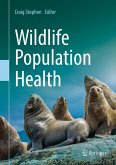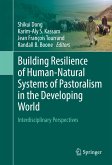Genomics Applications for the Developing World evolved from an observed need for information on genomics and other related "omics' technologies that are beginning to take hold in the developing world. It presents current research and perspectives from a wide range of respected scientists and world leaders in their fields in both developed and developing countries. Topics range from discussions on Tuberculosis, Malaria, emerging viruses and bacterial infectious agents to discussions on genomics of various crop species and the implications of studies on the human microbiome to aspects of developing world health. The global challenge of genomics education is also discussed.
This book is a reference work for scientists at all levels, educators and students both at the graduate and undergraduate level who reside across the globe.
Dieser Download kann aus rechtlichen Gründen nur mit Rechnungsadresse in A, B, BG, CY, CZ, D, DK, EW, E, FIN, F, GR, HR, H, IRL, I, LT, L, LR, M, NL, PL, P, R, S, SLO, SK ausgeliefert werden.









